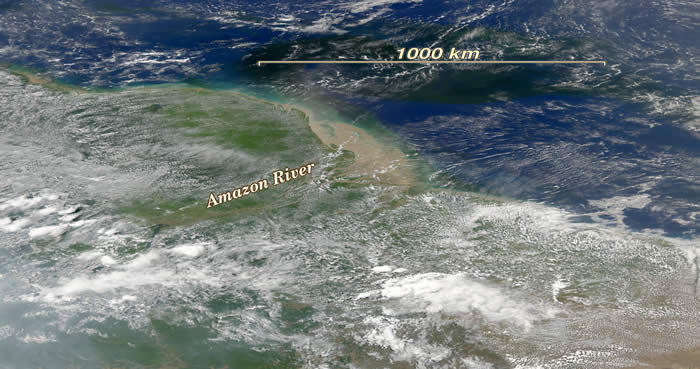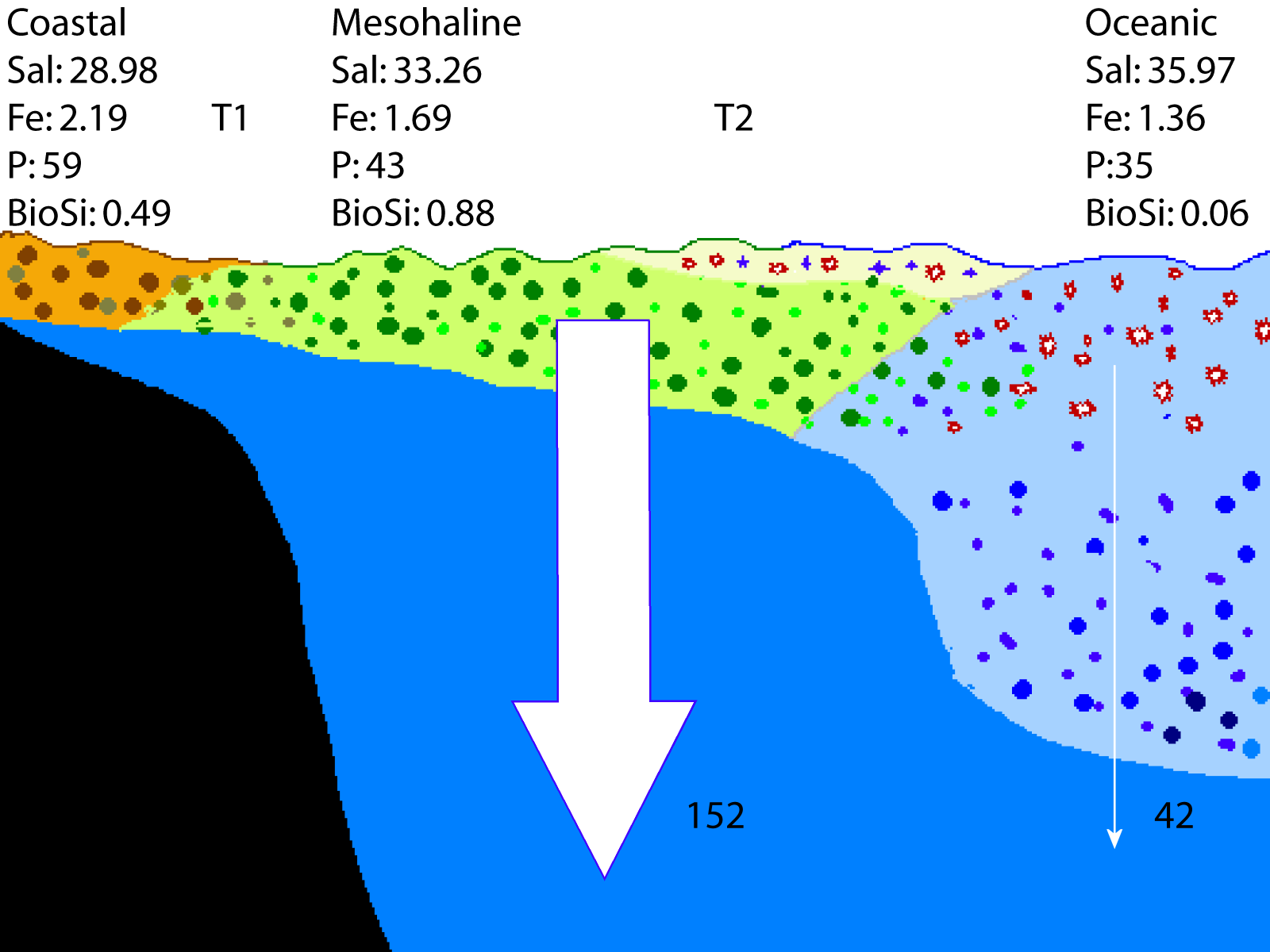
The Tropical North Atlantic Ocean
exhibits high primary productivity (PP) relative to other tropical open
ocean
environments with substantial contributions from two cyanobacterial nitrogen-fixers (diazotrophs) -
freeliving Trichodesmium and the diatom endosymbiont Richelia. The diazotrophy is
supported by the seasonal outflow of nutrients from rivers. We find that the two diazotrophs have
very different spatial and temporal distributions, due largely to
changes in
dissolved iron, phosphorus, and silicon introduced by rivers. Diazotroph-Diatom Associations (DDA)
dominate moderate salinity waters away from the continental shelf while
Trichodesmium
is the dominant large diazotroph elsewhere. Carbon (C) fixed by these two diazotrophs contribute to dissolved
inorganic C
drawdown. Sedimentation of diazotrophs in the
Amazon River plume, a hitherto unrecognised process, may contribute to
the
sequestration of up to 20 TgCy-1.
The above image was acquired by the MODIS sensor on Aqua on 30 August 2003 and shows the Amazon River plume extending 1000s of kilometers offshore. The mouth of the river is seen as an expanse of chocolate colored waters due to suspended sediments while the offshore plume appears dark because of the dissolved organic matter and phytoplankton present in the plume. For a full resolution version of the above image click on it and save the file.
The image below is the full version and shows hurricane Fabian in the background, in addition to the Amazon River mouth and plume in the center of the picture. The full resolution image is 24MB and can be saved by clicking on the picture below.
These images were created by Norman Kuring, Ocean Biology Processing Group, NASA GSFC.

Click on the play button on the image below to watch a movie loop of the Amazon River plume (seen as the warmer colors representing higher concentrations of phytoplankton and dissolved organic matter). Animation courtesy of the NASA OBPG.